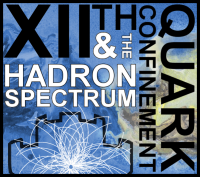Speaker
Description
Centrality, as a geometrical property of the collision, is crucial for the physical interpretation of nucleus-nucleus and proton-nucleus experimental data. However, it cannot be directly accessed in event-by-event data analysis. Contemporary methods of the centrality estimation in A-A and p-A collisions usually rely on a single detector (either on the signal in zero-degree calorimeters or on the multiplicity in some semi-central rapidity range). In the present work, we made an attempt to develop an approach for centrality determination that is based on machine-learning techniques and utilizes information from several detector subsystems simultaneously. Different event classifiers are suggested and evaluated for their selectivity power in terms of the number of nucleons-participants and the impact parameter of the collision. Finer centrality resolution may allow to reduce impact from so-called volume fluctuations on physical observables being studied in heavy-ion experiments like ALICE at the LHC and fixed target experiment NA61/SHINE on SPS.
This work is supported by the Russian Science Foundation, GRANT 16-12-10176.
